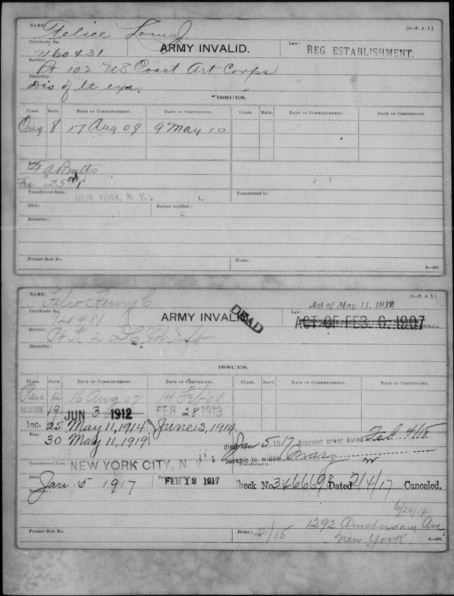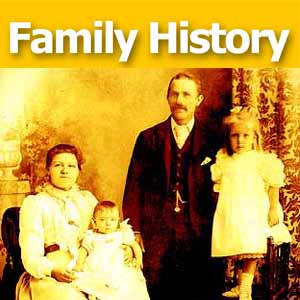by Lisa Cooke | Dec 18, 2013 | 01 What's New, DNA
I recently blogged about some governmental red tape being faced by 23andMe. They have suspended sales of their “health-related genetic tests” and stopped providing interpretive information about those tests, but are continuing to offer their genealogy products. Just thought I’d share!
by Lisa Cooke | Dec 3, 2013 | 01 What's New, British, Church, FamilySearch
Over a million Church of England records from the county of Norfolk are among materials now indexed at FamilySearch.org.

Happisburgh church of St. Mary’s, Norfolk. Image by Martin at Flickr Creative Commons.
The collection includes bishops’ registers of baptisms, marriages and burials from the mid-1600s to the mid-1900s.
- Baptismal records may include the child’s name, date and place of baptism, parents’ names and residence, legitimacy status of the child, father’s occupation and minister’s name.
- Marriage records may include the names, ages, marital status and residence of bride and groom; date and place of marriage; fathers of the bride and groom and information on whether banns were published.
- Burial records may include the name, age, and residence of the deceased and the date and parish of burial.
The Church of England was a state-sponsored church. This helps genealogists because it means that most everyone who lived there (until the mid-1800s or so) is likely to show up in Church of England records. So if you had English ancestors who lived in Norfolk, take a look. These images have been online since 2010, but the new index makes them a lot easier to search!
by Lisa Cooke | Dec 1, 2013 | 01 What's New, FamilySearch, Military, Records & databases
FamilySearch recently added another 192 million+ images and indexed records from North and South America and Europe to its growing FREE online collections. In the list at the bottom of this post you’ll find content from Brazil, Colombia, Peru, Spain, Switzerland, the United States, and Wales.
Notable collection updates include the 314,910 images from the Spain, Province of Barcelona, Municipal Records, 1387–1936,
collection, the 576,176 indexed records from the United States Veterans Administration Pension Payment Cards, 1907–1933, collection, and the 189,395,454

Sample image from “United States Veterans Administration Pension Payment Cards, 1907-1933.” Index and images. FamilySearch. https://familysearch.org : accessed 2013.
indexed records from the United States Public Records Index.
Here’s an example of a V.A. pension card, created by the Bureau of Pensions and Veterans Administration to record payments to veterans, widows and other dependents. FamilySearch describes the cards this way: “On the front of the cards for invalid veterans are recorded the name of veteran, his certificate number, his unit or arm of Service, the disability for which pensioned, the law or laws under which pensioned, the class of pension or certificate, the rate of pension, the effective date of pension, the date of the certificate, any fees paid, the name of the pension agency or group transferred from (if applicable), the date of death, the date the Bureau was notified, the former roll number, and ‘home.’ On the reverse side of the form appears the name of the veteran, his certificate number, and the record of the individual payments. The army and navy widow’s cards are similar to the invalids’ cards with the addition of the widow’s name and occasionally information regarding payments made to minors, but they do not indicate if the veteran had a disability.”
|
Collection
|
Indexed Records
|
Digital Images
|
Comments
|
| Brazil, Mato Grosso, Civil Registration, 1848-2013 |
0 |
126,870 |
Added images to an existing collection. |
| Brazil, Minas Gerais, Catholic Church Records, 1706-1999 |
0 |
827 |
Added images to an existing collection. |
| Brazil, Pernambuco, Civil Registration, 1804-2013 |
0 |
94,516 |
Added images to an existing collection. |
| Colombia, Catholic Church Records, 1600-2012 |
0 |
111,526 |
Added images to an existing collection. |
| Peru, Puno, Civil Registration, 1890-2005 |
0 |
176,918 |
Added images to an existing collection. |
| Spain, Province of Barcelona, Municipal Records, 1387-1936 |
0 |
314,910 |
Added images to an existing collection. |
| Switzerland, Fribourg, Census, 1839 |
0 |
2,552 |
New browsable image collection. |
| Switzerland, Fribourg, Census, 1842 |
0 |
2,851 |
New browsable image collection. |
| Switzerland, Fribourg, Census, 1845 |
0 |
3,062 |
New browsable image collection. |
| Switzerland, Fribourg, Census, 1850 |
0 |
2,968 |
New browsable image collection. |
| Switzerland, Fribourg, Census, 1860 |
0 |
20,530 |
New browsable image collection. |
| Switzerland, Fribourg, Census, 1870 |
0 |
22,554 |
New browsable image collection. |
| U.S., Alabama, County Marriages, 1809-1950 |
324,971 |
690,459 |
Added indexed records and images to an existing collection. |
| United States Public Records Index |
189,395,454 |
0 |
Added indexed records to an existing collection. |
| United States Veterans Administration Pension Payment Cards, 1907-1933 |
576,176 |
0 |
Added indexed records to an existing collection. |
| United States World War I Draft Registration Cards, 1917-1918 |
644,004 |
0 |
Added indexed records to an existing collection. |
| Wales, Court and Miscellaneous Records, 1542-1911 |
0 |
84,676 |
Added images to an existing collection. |
by Lisa Cooke | Nov 19, 2013 | British, Conferences, Who Do You Think You Are?
Recently I heard from podcast listener Julie, a New Zealander living in Kuwait. My podcast made her aware of Who Do You Think You Are? Live, the huge

Here I am in last year’s experts panel
family history conference coming up in the U.K. in 2014. She’s bought her plane tickets but, she says:
‘I am overwhelmed! I have never been to any sort of family history event, fair, society meeting – this will be my very first one. I’m not even sure which entry tickets I would be best to get – I am going for the three days but am wondering if a VIP ticket the first day might be a good way to get introduced and then get the two day ticket for the remaining days. With all the SOG workshops, DNA workshops, experts, the “Heirloom Detective,” exhibitors and so much more, I’m not sure how to get the most out of the three days.”
To anyone else feeling overwhelmed at the prospect of attending WDYTYA Live, let me see if I can be of some help:
RE: VIP Day – Since I have been a presenter the last three years, I didn’t deal with tickets. However, I can tell you that the most popular speakers do fill up (particularly the celebs). Also you can spend valuable time standing in line without reserved seats. So if you are keen to see particular talks and want to save time, then a VIP day would probably be really nice. If you’re willing to get in line early and wait, then you can certainly get in to just about any talk you want with pre-purchased workshop tickets. At least that’s how it seemed to me.
RE: Workshop vs Hall. While it would be easy to just spend all day every day in the workshops, in my mind it is the exhibit hall that is really special. They do the exhibit hall much better in London than they do here in the U.S. It is huge, and exhibitors incorporate a lot of hands-on opportunities. You could easily spend one full day just on exhibits. I would allow at least 1/2 day for the “vendors” and 1/2 day for the “society tables” and fill the rest of my 3 days with lectures and workshops.
The photo specialists are extremely popular. Bring photos with you if you want them looked evaluated, but prepare to queue up for a very long time. (Perhaps get in line first thing one morning.)
Here’s one last important tip: be sure to follow the event blog and keep an eye out on the website as they tend to announce new and last-minute events right up until the end.
I hope that helps you all! And to Julie-from-New-Zealand-in-Kuwait: thanks so much for listening to the podcast!
by Lisa Cooke | Nov 12, 2013 | 01 What's New, Ancestry, Census, Family History Podcast, FamilySearch, Findmypast, Inspiration, Records & databases, Research Skills
 Published November 5, 2013
Published November 5, 2013
by Lisa Louise Cooke
[display_podcast]
Download the Show Notes for this Episode
Welcome to this step-by-step series for beginning genealogists—and more experienced ones who want to brush up or learn something new. I first ran this series in 2008. So many people have asked about it, I’m bringing it back in weekly segments.
Episode 6: Sleuthing Out Families and What Records Exist
We talk about sleuthing Sherlock Holmes-style for our families. My guest says, “Stop looking for names and start looking for families!” (Disclaimer: this episode was recorded several years ago and is not an endorsement of the guest at that time, and his opinions are his alone.)
In the second segment, I give an overview of the different kinds of historical records in which our ancestors may appear. Basically, whenever any life event happened that involved the government or a church, paperwork was generated: vital records, land sales, wills and probates, baptisms and burials. There was often a ripple effect, too, in which the event was reported in other sources, like newspapers. In future episodes, we’ll talk in depth about finding and using these different kinds of sources. But consider this episode your orientation to them!
Updates: since this episode aired, the 1940 census has become available to the public. Learn more about it here and search it at your favorite genealogy data site, like: Ancestry.com, Archives.com, Familysearch.org, Findmypast.com and MyHeritage.com.








